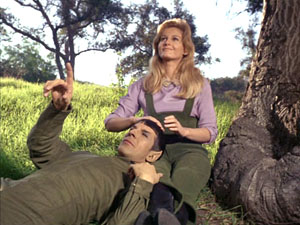 “This Side of Paradise” begins with the Enterprise approaching Omicron Ceti III, where a colony of humans landed 4 years earlier. Unfortunately, it was later discovered that the planet was bombarded with Berthold rays, which kill animal life with about a week of exposure. So the mission is to be a mop-up operation, clearing away the dead colonists.
“This Side of Paradise” begins with the Enterprise approaching Omicron Ceti III, where a colony of humans landed 4 years earlier. Unfortunately, it was later discovered that the planet was bombarded with Berthold rays, which kill animal life with about a week of exposure. So the mission is to be a mop-up operation, clearing away the dead colonists.
Kirk, Spock, McCoy, Sulu, and two others beam down. The landing party contains no members in red shirts(!) and, sure enough, none of them end up being killed. They find a healthy and active colony of humans, where they expected bodies. Sulu gets a great line: “Do you think they could be dead?” I like this line, because it shows that nothing is so far beyond the realms of possibility that a Starfleet officer can’t suggest it. The colony looks like a simple Earth farm (no doubt because it was filmed on one), with no modern technology in sight.
We meet the beautiful Leila, who serves as girl of the week for… Spock! This is achieved through the expedient of mysterious plants on the planet, which spray people in the face with spores. These spores (a) keep the people alive despite the Berthold rays, and (b) turn them into happy pacifists. Everyone is affected, except Kirk for some reason not explained until later in the episode.
Spock changes off-screen into some farmer overalls and spends much of the episode in pastoral romance scenes with Leila. One wonders where he got changed, since they were outside at the time he got spored, and are never shown returning to the farm. McCoy lapses into a southern accent and goes off in search of a mint julep. The entire Enterprise crew is infected too when someone beams some of the plants up. They abandon ship and all beam down to join the farm colony.
The colony leader, Elias Sandoval, tells Kirk to relax and enjoy the good life. Kirk gives a Picard speech, stating that humans weren’t meant to live easy lives, they need challenges. He storms off to beam back to the Enterprise and consider the situation. But how does he beam up if nobody’s up there to activate the transporter?? This is a jarring lapse of continuity within the series, in which it’s pretty well established that the transporter requires an operator on board ship. Kirk then laments in a log entry that unless he can figure out a way to bring everyone to their senses, he is doomed, since he can’t pilot the ship alone. This seems odd, since the captain should presumably be trained in helm and navigation, and the engines should in any reasonable ship manage to stay in one piece long enough for one trip. Perhaps the engines are so unreliable that Scotty really does need to nurse them along constantly, so they don’t explode or something.
Kirk is sprayed by a flower and succumbs briefly to its effects, but manages to throw it off by getting upset about leaving the Enterprise. He realises that strong emotions break the thrall of the spores, and tricks Spock into beaming up, then insults and initiates a fistfight with him. Spock recovers just before bashing Kirk’s brains out with a chair, and the two of them engineer a sonic anger generator. Leila calls and requests to beam up, saying she has “never seen a starship”, which is weird, since she arrived on this planet just four years earlier, presumably on a ship. Spock breaks her heart with his cold logic, which snaps her out of the spore-induced rapture. She agrees they need to evacuate all the colonists.
The anger ray brings everyone on the planet to their senses, and an orderly evacuation is begun. In the denouement, Leila says that Spock never told her his full name. He says, “You couldn’t pronounce it.” This was a surprise – I’d always assumed Spock had no other name. This episode also has the first use in the series so far of the word “Vulcan” as an adjective to describe Spock, although earlier someone also uses the word “Vulcanian” that everyone has been using so far in other episodes. Maybe this is the transition episode! We shall see as the series continues.
Basically this is an episode designed to give Spock a love interest, and to do that they had to devise some form of mind-affecting phlebotinum to release his inhibitions. We’ll see this again later, done in a different way. Basically it’s another way of writing around an established fact of the story universe. Anyway, overall I think this is an okay episode. Not great, but not bad either.
Tropes: Negative Space Wedgie, Uncanny Village, Space Amish, Gaussian Girl, Girl Of The Week, Perfect Pacifist People, Everybody Must Get Stoned, That Cloud Looks Like, Measuring The Marigolds, Only Sane Man, Ooh, Me Accent’s Slipping (in character), Patrick Stewart Speech, Insulted Awake, Emotion Bomb, I Am What I Am.
Body count: None.
(Image © 1966 Paramount Studios, used under Fair Use.)

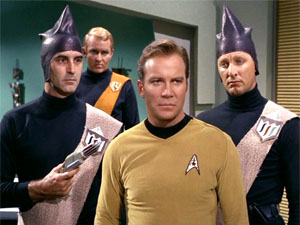 “
“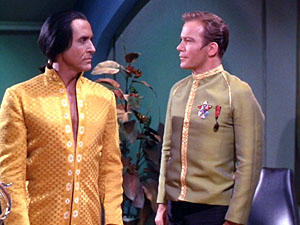 Ah… “
Ah… “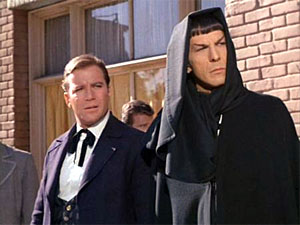 “
“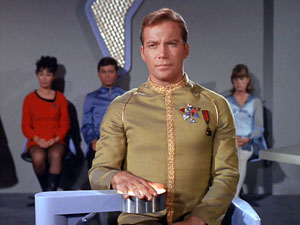 “
“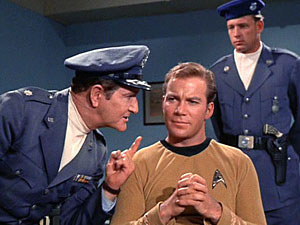 “
“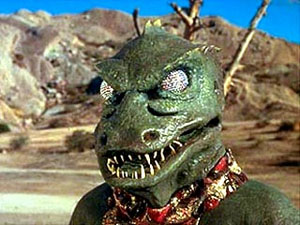 “
“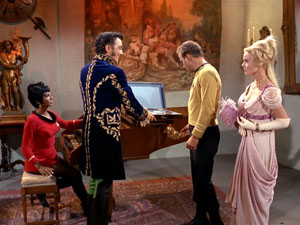 Well, it had to happen eventually. “
Well, it had to happen eventually. “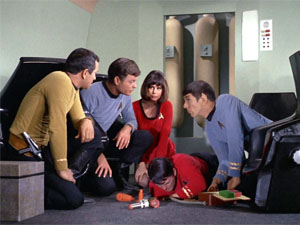 “
“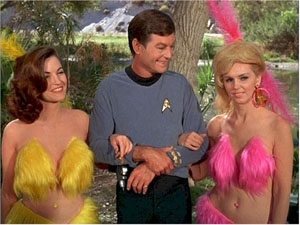 “
“